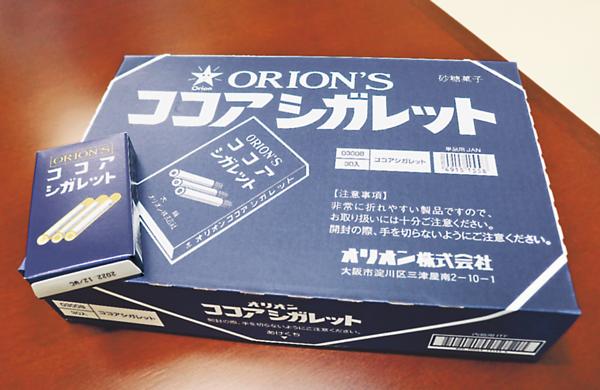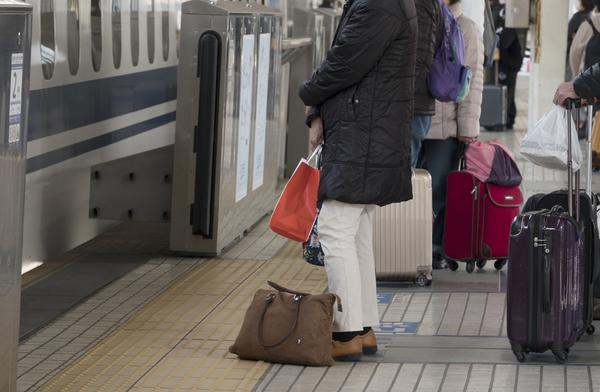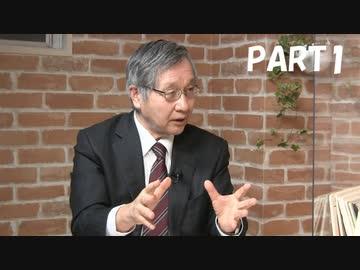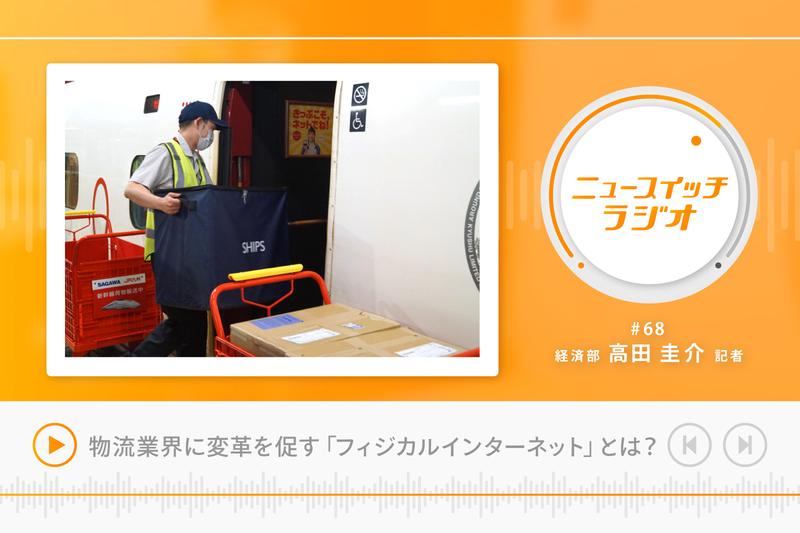Current Awareness No.348 June 20, 2021
CA1997
Required Libraries to Prepare for Flood Damage
Japan Library Association Library Disaster Response Committee: Yoshitaka Kato, Hiroshi Kawashima
Introduction
Natural disasters are occurring more frequently and becoming more severe. In particular, record rainfall caused by heavy rains and typhoons causes flood damage and landslide disasters, and libraries are also suffering from flood damage. The authors are members of the Japan Library Association (JLA) Library Disaster Countermeasures Committee(1), which raises awareness of disaster prevention among library staff and provides indirect and direct support to affected libraries. may do so. During the heavy rain in July 2018 (Western Japan torrential rain; see E2056), when several museums were visited, materials were damaged by water, and a total of approximately 186,000 materials were lost. Furthermore, in the 2019 East Japan Typhoon (Typhoon No. 19; see E2208), 108 public libraries were damaged by flooding and rain leaks.
In "Current Awareness", we have published articles on dealing with water damage to materials (see CA1891, CA1926). These articles focus on post-disaster measures, but this paper focuses on pre-preparation for flood damage. In addition, due to the limited space, I will proceed with the discussion mainly by exemplifying public libraries, but I hope that it will be useful to a wide range of universities, schools, public halls, etc. (while reflecting on the biased accumulation of information). Although water damage includes secondary damage caused by earthquakes and fires, as well as accidents caused by rain leaks and equipment failures that occur on a daily basis, it covers direct damage caused by natural disasters.
1. Necessity of Flood Countermeasures
Regarding preparations for disaster prevention, looking at the case of a public library, first, the establisher (local government) formulates a "local disaster prevention plan" for natural disasters. It also covers flood damage. Based on the plan, local government officials act to protect the lives and properties of citizens from disasters (2).
The legal system for the safety of facilities is the City Planning Act(3), the Building Standards Act(4), the Fire Service Act(5) , etc., and according to Article 2, Item 2 of the Building Standards Act, libraries are "special buildings" that require greater safety. Beginning with the regulations applied at the time of design and construction, even after completion, libraries that are "specific buildings" (floor ≥ 3 floors or floor area ≥ 2000 m2) are obligated to perform periodic inspections and reports.
However, the law is said to be a "minimum" stipulation, it does not guarantee safety, and the ratio of stipulations for earthquakes and fires is large. Firefighting activities cover not only fire but also flood damage, but fire prevention management and fire extinguishing/evacuation drills based on the Fire Defense Law do not cover flood damage.
The Ministry of Education, Culture, Sports, Science and Technology, which has jurisdiction over libraries, has issued a notification "Desired Standards for Establishment and Operation of Libraries", stating that "Libraries shall be equipped with facilities necessary for disaster prevention and hygiene in order to ensure the safety of users. It says (6). For these reasons, libraries are strongly required to conduct voluntary risk assessments and preparations.
However, according to an NHK survey conducted in March 2020, the current situation was that flood damage countermeasures were not sufficient. In the survey, 18 libraries (38%) answered that they were preparing for flood damage, while 29 libraries (62%) answered that they were not. ) was (7).
2. Lessons learned from surveys and records
Investigations by the JLA Library Disaster Response Committee(8) and reports on damage over the past 20 years are published in publications and in the "Current Awareness The following events, tendencies, and lessons were found when extensively examining various information, including the portal (9).
(1) Geographical and architectural conditions
The risk of flood damage is closely related to topography. Areas with low elevations may be damaged by storm surges and levee breaches (external water), and mountainous areas may suffer damage due to narrow river widths. Areas with low water retention capacity due to urbanization are at risk of inland floods caused by short periods of heavy rain. Basement and semi-basement floors are also more susceptible to flooding. And even if the doors and windows are blocked, the increased volume of water will flow back up the drainpipe and enter the interior. In addition, the occurrence of a disaster at unmanned times, such as at night or on holidays, is disadvantageous in terms of damage control.
(2) Protect people and materials
In the past 20 years, there have been no fatal accidents in the library due to flooding, but it is necessary to give top priority to protecting human life and at the same time protect materials. To prevent water damage to materials, it is effective to move books higher than usual (10). In addition, valuable materials that have been damaged by water can be rescued depending on how they are handled.
Figure 1 Case of Kakuda City Library, Miyagi Prefecture
East Japan Typhoon (October 13, 2019) Staff evacuated picture books, etc., to tables and upper bookshelves before the floor flooded. (Photographed by Kakuda City Library)
(3) Importance of daily preparation
Usually, it is necessary to clean rainwater drainage routes such as roofs, gutters, and gutters. Planned repairs are required for aged deterioration of roofing materials and roofing materials. Prior knowledge, experience, and practices regarding water damage countermeasures may affect the degree of damage, and lack of a sense of crisis (normalcy bias) is prohibited.
(4) Water Damage
Paper, wooden furniture, electrical equipment, and vehicles are vulnerable to water. In addition, water-damaged books may swell and cannot be removed from the bookshelves, or the bookshelves may break. In addition, restoration of facilities and equipment requires a great deal of time, labor, and budget. Similarly, restructuring, such as purchasing new and second-hand books, and collecting unsold materials such as pamphlets, not only requires time, effort, and budget, but may also be impossible to collect.
3. Specific preparations for disaster prevention and mitigation
In order to protect people and materials, human factors such as surveys, plans, and training, as well as physical preparations such as flood prevention and material rescue, are essential. Both physical elements are required. Below, based on the lessons raised in Chapter 2, we will introduce specific examples of preparedness in libraries.
(1) Knowing the risks of location
First, it is important to know the risks in advance. For that purpose, the following tools are useful(11).

(2) Preliminary plans and actions
Preliminary action plans and training are necessary to protect human lives and materials from flood damage, but the following concrete methods are available.
Fig. 2 Timeline example
The above diagram was created by the authors to show actions for each "heavy rain warning level"(18). This is just an example, and it is hoped that specific discussions will be held at individual museums.
(3)Equipment and goods to be provided
It is recommended to prepare the following equipment and goods for flood control and emergency response.
Examples of other ingenuity in the library. When the building is closed, the elevator car is stopped at the top floor, which is the safest from water damage. In order to prevent data corruption and system stoppages, cloud servers are used, and PCs are basically laptops that are easy to carry. As for the materials, valuable books are placed on the upper floors and upper shelves and stored in storage boxes, and multiple copies are distributed in the main building and annexes.
(4) Literatures, websites, materials
As mentioned in Chapter 2 (3), the degree of damage can depend on the presence or absence of prior knowledge. Therefore, collecting information on a daily basis using the following methods is also an important measure against flood damage. For example, saveMLAK(23) and the Current Awareness Portal of the National Diet Library (NDL) have many reports of damage. In 2015, the JLA established the Library Disaster Countermeasures Committee to collect and disseminate information. In addition, there is a lot of useful information in publications(24) and websites(25) of libraries and library-related organizations(26) >.
4. Issues and Supplements
There is a change (worsening) in the nature of natural disasters worldwide, and there are warnings that it is caused by global warming(27). If this is true, then we should be prepared for a higher risk of severe disasters, and preparation becomes more important.
What the authors particularly feel as an issue and point of reflection is the difficulty of knowing and communicating the damage situation. When flood damage is reported, the situation of the library is worried, but calls to check on people's safety may cause trouble for the affected library. However, flood damage requires prompt response and assistance, such as the rescue of materials, so it is difficult to determine the method and timing of contact. Also, in a small organization such as a school library, there is a danger of being isolated. To add to that point, if there are many connections whose faces can be seen on a regular basis, the barrier of "hesitation" will be lowered in the event of a disaster. For example, I would like to see relationships between prefectural libraries and municipal libraries, and relationships between universities and schools, where we can see each other's faces.
(1) “Library Disaster Countermeasures Committee”. Japan Library Association.
(2) Cabinet Office (Disaster Management). A Guide to Flood Response for Municipalities. 2020, 59p.
(3) “City Planning Law (Law No. 100 of 1968)”. -03-29).
(4) “Building Standards Law (Law No. 201 of 1950)”. See 2021-03-29).
(5) “Fire Service Law (Law No. 186 of 1948)”. See 2021-03-29).
(6) It is described in 2 of "6 Crisis management" of "1 general rule". “Desirable Standards for Establishment and Operation of Libraries (December 19, 2012 Ministry of Education, Culture, Sports, Science and Technology Notification No. 172)” Ministry of Education, Culture, Sports, Science and Technology. a_menu/01_l/08052911/1282451.htm, (accessed 2021-03-29).
(7) “60% of libraries have not implemented flood damage countermeasures, NHK survey”. NHK.2020-04-30.https ://www.nhk.or.jp/d-navi/sci_cul/2020/04/story/story_200430-2/, (accessed 2021-03-29).
(8) “Damage to Public Libraries by Torrential Rain in July 2018 (Western Japan Torrential Rain)”. Japan Library Association. http://www.jla.or.jp/committees//tabid/757/Default.aspx, (accessed 2021-03-29).
(9) Current Awareness Portal. https://current.ndl.go.jp/, (accessed 2021-03-29).
(10) At the Ozu City Library in Ehime Prefecture and the Kakuda City Library in Miyagi Prefecture, etc., valuable materials were moved to the upper floors, or materials on the bottom floor were evacuated to the upper floors for protection. At the Daigyoji Branch of the Hakuo University General Library in Tochigi Prefecture, the use of the library has been changed in light of the flood damage to the basement stacks, and when heavy rain warnings are issued, materials in the basement are evacuated to the upper floors to reduce damage. In addition, in the case of Uwajima City Kanno Domei Memorial Yoshida-cho Library in Ehime Prefecture, there were cases where valuable materials were kept on the upper floors during normal times to avoid damage to the materials. [Video included] Typhoon No. 19 damaged libraries in 13 prefectures, calling for conservation "even if they get wet, they can be restored." Tokyo newspaper. 2019-10-28.https://www.tokyo-np.co.jp/article/18996, (accessed 2021-03-29).
(11) In addition to the tools listed in the text, the following materials are helpful for risk assessment. "Preservation of materials - Preservation of collections - Material disaster prevention - Risk assessment". National Diet Library. ). Yayoi Hotta. Special Feature, Preparing for Disasters: Disaster Risks and Disaster Information You Should Know in Advance, Information Science and Technology. 2020, 70(9), p. 452-457.https://doi.org/10.18919/jkg.70.9 _452, (accessed 2021-03-29).
(12) Hazard map portal site https://disaportal.gsi.go.jp, (accessed 2021-03-29). 2020-10-10. Morning edition. p. We realize "basin flood control" that we cooperate with! ~”. Ministry of Land, Infrastructure, Transport and Tourism. 2021-02-02.
(13) “Flood Defense Law (Law No. 193 of 1949)”. See 2021-03-29).
(14) For example, a hazard map was posted at Mabi Library in Kurashiki City, Okayama Prefecture.
(15) Geospatial Information Authority of Japan map.https://maps.gsi.go.jp, (accessed 2021-03-29).
(16) As far as I could confirm in the field survey, I checked the local flood damage records at the Kakuda City Library in Miyagi Prefecture.
(17) Ichiro Matsuo. Timeline Japan's disaster prevention measures will change. Nikkan Kensetsu Kogyo Shimbun, 2018, 151p. (Reference 2021-03-29).
(18) Cabinet Office (Disaster Management Section). Guidelines for Evacuation Information. 2021, 134p. NHK. 2021-04-28.https://www3.nhk.or.jp/news/html. /20210428/k10013002351000.html, (referenced 2021-05-02). Supervised by Fumihiko Imamura. Storm, flood and landslide disasters disaster prevention timeline for my home What we can do now to protect our lives Let's create a disaster prevention timeline disaster prevention kit. Tokyo Horei Publishing , 2020, 26p.
(19) Examples of libraries equipped with waterstops and sandbags can be found below. Seishi Kawasaki. Special issue, Libraries and disaster damage and its lessons : Storm surge damage and restoration of Takamatsu City Library. Library Journal. 2005, 99(5), 978, p. 302-303. Saori Maekawa. Collaborative Research, Reconstruction of Life Culture Research in the Great East Japan Earthquake Disaster Area and Integration of Museum-type Research: Cultural Property Rescue Network and Tono. 2019, 214, p. 88. Akira Yumigata. “Flood Damage and Restoration of Shizuoka City Southern Library”. Japan Library Association. 27th Workshop on Library Architecture. 2006, p. .
(20) “Useful disaster prevention at home” Ministry of Land, Infrastructure, Transport and Tourism. -03-29).Take advantage of the time to prepare Typhoon countermeasures. Mainichi newspaper. 2019-09-17. Morning edition. p. 10.
(21) Setsuo Mano. Save library materials from getting wet! Japan Library Association, 2019, p. 17-20. "Preservation of Materials Preservation of Collections Preservation of Materials Disaster Preparedness". National Diet Library. https://www.ndl.go.jp/jp/preservation/collectioncare/disaster_p/ preparedness.html, (accessed 2021-03-29).
(22) What is "disaster prevention without preparation"? A way of thinking that transcends the barriers of imagination. Asahi Shimbun. 2021-02-13. Morning edition [be]. p. 4. General Incorporated Association Phase Free Association.
(23) saveMLAK provides disaster and relief information for museums (M), libraries (L), archives (A), and community centers (K) on its website. It was established in the wake of the Great East Japan Earthquake, and since April 2020 has been conducting surveys and public activities on the COVID-19 response status of libraries. saveMLAK.https://savemlak.jp/, (accessed 2021-03-29).
(24) Mano.
(25) “Preservation of materials”. National Diet Library. ”. Tokyo Metropolitan Library.
(26) In addition, the response that the library actually took at the time of the disaster is also helpful for preparing in advance. For example, based on the results of literature and field surveys, the following can be mentioned.・Universities/Public Libraries: Disseminate information on closures, cancellation of events, suspension of BM operations, blockade of bookposts, etc. via web pages and SNS.・Avoid danger by avoiding nighttime gatherings (Mabi Library, Kurashiki City, Okayama Prefecture) ・The prefectural library investigates and announces the damage situation, and cooperates with restoration activities. Yasuko Sakaguchi. 20 years after the ``Tokai Heavy Rain''-at that time, the Nagoya City Library. Library for Everyone. 2020, (518), p. 41-46. “Library Guidance Emergency Disaster Management (Response)”. Nagoya City Library.
(27) Yoshiaki Kawata. Era of Great Disasters: 6000 Victims, 150 Trillion Yen in Damage, Major Floods of the "National Crisis" Level, Tokyo Flooded by Arakawa River. Chuokoron. 2020, 134(3), p. 38-47. Yuki Kobayashi. Large-scale disasters: Views of nature questioned. Yomiuri Shimbun. 2020-02-24.
[Received: 2021-05-17]
Koukei Kato, Hiroshi Kawashima. Preparing Libraries for Flood Damage. Current Awareness. 2021, (348), CA1997, p. 5-8https://current.ndl.go.jp/ca1997DOI : https://doi.org/10.11501/11688289
Kato YoshitakaKawashima HiroshiPreparation for flood damage required of the library






![[New Toyota Voxy (90 series)] Amplifies the characteristics of the aero body! A design that further enhances the power of the front mask! #Works direct custom deep layer 001](https://website-google-hk.oss-cn-hongkong.aliyuncs.com/drawing/article_results_9/2022/3/25/01568e2fbf021c0eaf7d013507c850a4_0.jpeg)

![[Toyota Noah / Voxy new model] Modellista releases various customized parts ... Actual vehicle exhibited at Tokyo Auto Salon](https://website-google-hk.oss-cn-hongkong.aliyuncs.com/drawing/article_results_9/2022/3/25/8268612c1e5941e62d3dfd07f8991b2f_0.jpeg)
